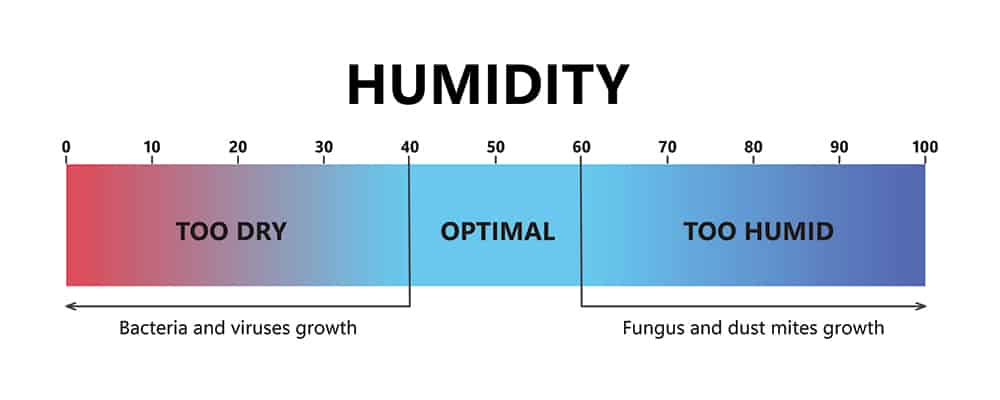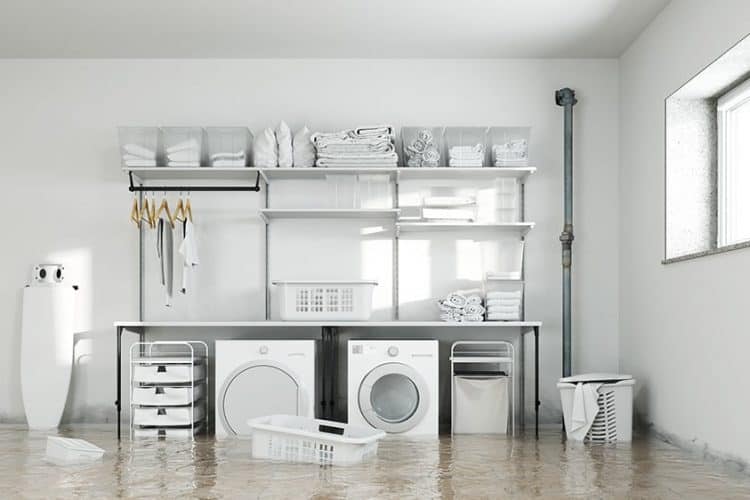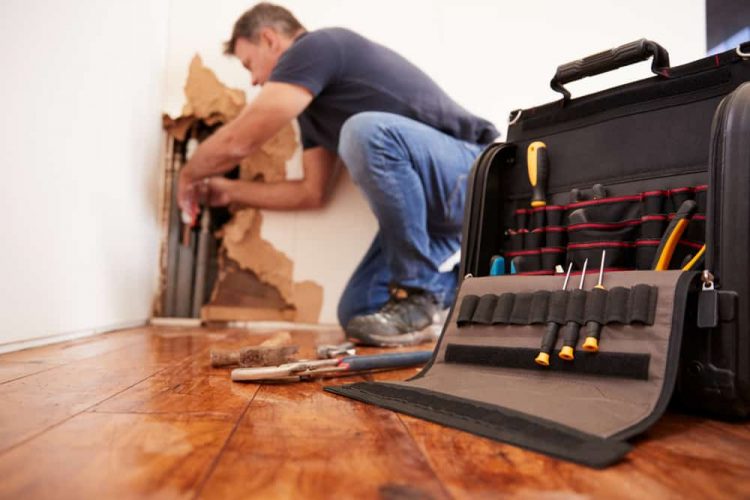As a homeowner, you need to be aware of the signs of mold and understand what to do if you encounter it. This brief primer will answer the question, “How does mold spread?” as well as how to manage it and when to call a professional.

Signs you may have mold
If you’re concerned that you may have mold in your home, you’ll want to deal with it quickly. If you’re unsure if you have mold, here are some signs to look for:
- Dark-colored (green, black, brown) spots on walls and floors
- Strong, musty odors inhabiting a space – you may notice this odor before you see visible signs of mold
- Moisture issues such as leaks and high humidity
- Increased condensation around your home
- Aggravated allergy symptoms (sneezing, congestion, itchy or watery eyes, coughing)
How does mold spread in your home?
It’s important to know that we are constantly around mold spores in our indoor and outdoor environments. Mold spores can transfer onto and off of our clothes, our shoes, our pets, and easily spread through various airborne methods.
Mold spores can, and do, exist indoors without growing or causing issues. But once those mold spores have a moisture source, they begin to grow into a problem. Mold grows particularly quickly on fibrous building materials such as carpet, wood, paper, and drywall.
Generally speaking, mold takes 24-48 hours to start growing on surfaces or materials once water or excess moisture is introduced. The mold begins to colonize, with mold spores becoming visible after 18-24 days, and within a couple of weeks, a once-small area of mold can become a much larger mold problem. So, when it comes to managing mold spread in your home, addressing it in a timely fashion is a critical first step.
How to stop mold from spreading
The key to controlling mold growth is controlling moisture. Here are some of the ways you can control moisture in your home:
- Venting appliances. Any appliance that produces water vapor needs to be vented outdoors, not into the attic as is sometimes the case.
- Use exhaust fans. Run the bathroom fan while showering and keep it running for about 10-15 minutes afterward. Use vent hoods or exhaust fans when cooking, and make sure your dishwasher is venting properly. If your bathroom or kitchen exhaust fans aren’t quite cutting it, opening windows is another easy way to vent excess moisture out of the room.
- Insulate well. Condensation forms when water vapor in warmer air meets a cooler surface–think basement walls, air ducts, and water pipes. Properly insulating pipes and ductwork helps minimize condensation and the resulting moisture build-up.
- Air circulation. Be sure you have good air circulation in your home. This can be enhanced by using air conditioners, fans, and dehumidifiers as needed.
Managing the temperature in your home
In addition to moisture, the temperature and humidity of your home are both factors in controlling mold growth. The ideal humidity inside your home should be between 40% and 60%. Warmer temperatures and humidity levels above 60% increase opportunities for mold, bacteria, dust mites, and allergens to thrive.
HVAC systems are designed to regulate both temperature and humidity, so in most cases, adjusting your thermostat takes care of everything you need. However, if you live in a particularly humid area, or if you have areas of your home that are not air-conditioned or are prone to dampness, adding a dehumidifier to supplement your HVAC system can help you maintain ideal indoor humidity.
To measure humidity, you can use a hygrometer or humidity meter, which measures the level of water vapor in the air to determine relative humidity or “RH.” These devices are used by greenhouses, labs, and other climate-sensitive areas, but homeowners can also purchase digital hygrometers at their local hardware store. Many electronic and smart thermostats also come with built-in humidity sensors and controls.
How to get rid of mold so it doesn’t spread
While mold and mold spores cannot be entirely eliminated, there are some things you can do to mitigate the spread of mold indoors. The key factor is controlling moisture in your home, but being diligent with cleaning can also help because it reduces the buildup of spores, bacteria, and other organic matter that could become a food source for mold. If you have a water damage issue, it is especially important to clean the immediate and surrounding areas thoroughly and promptly, as mold can start to grow within 24-48 hours.
When you notice small areas of mold beginning to grow, it can usually be removed from hard, non-porous surfaces with a commercial mold remover, soap and water, or a bleach-and-water solution (1 cup of bleach in 1 gallon of water). Do not mix bleach or ammonia with household cleaners.
The EPA guide — A Brief Guide to Mold, Moisture and Your Home — is a good reference for preventing mold and managing a mold problem if you discover one.
When do I call a mold remediation service?
Sometimes, despite your best efforts, mold persists and needs to be removed by a professional remediation service. You should hire a qualified mold removal or mold remediation company if:
- The mold covers more than 10 square feet
- A lot of water damage is involved
- You suspect the heating, ventilation, and air conditioning (HVAC) system might be contaminated
- The mold damage was caused by flooding, sewage, or other contaminated water
- You have health concerns about cleaning the mold
- There’s a persistent odor that you cannot mitigate on your own
Call 1-800 WATER DAMAGE for mold issues
If you suspect or discover mold growth in your home, the property restoration experts at 1-800 WATER DAMAGE can help with mold removal and remediation.
Choose a 1-800 WATER DAMAGE location near you to get your home back to a healthy place to live. Call or inquire with us if you need a professional service.



